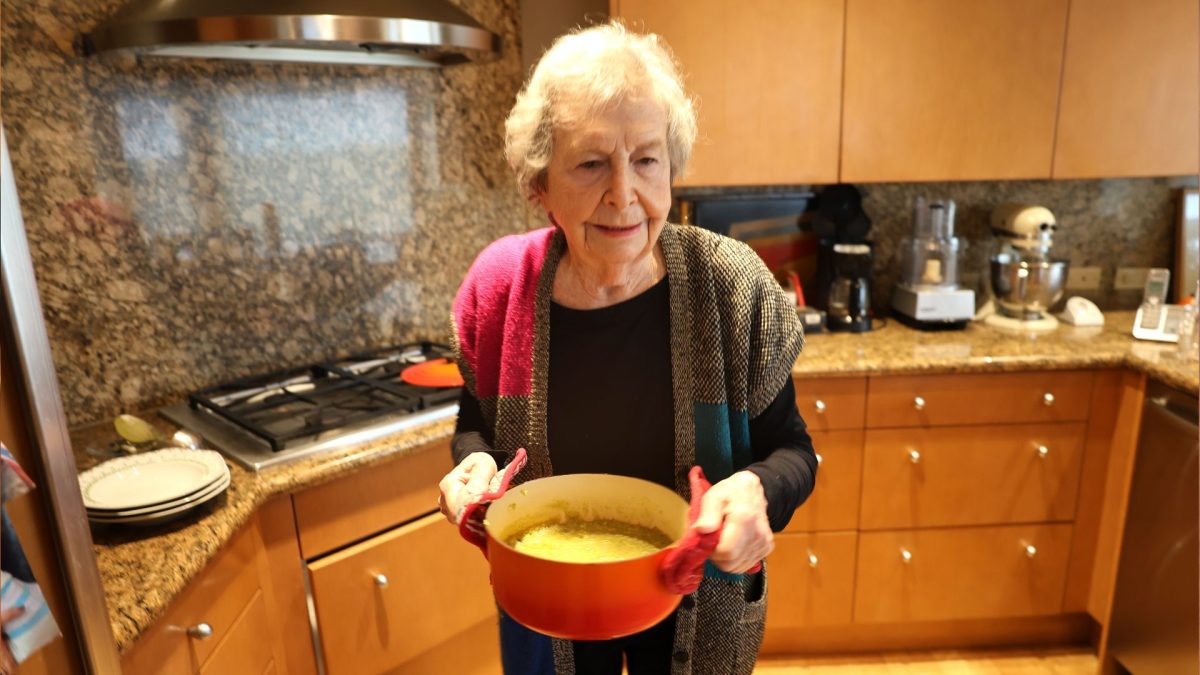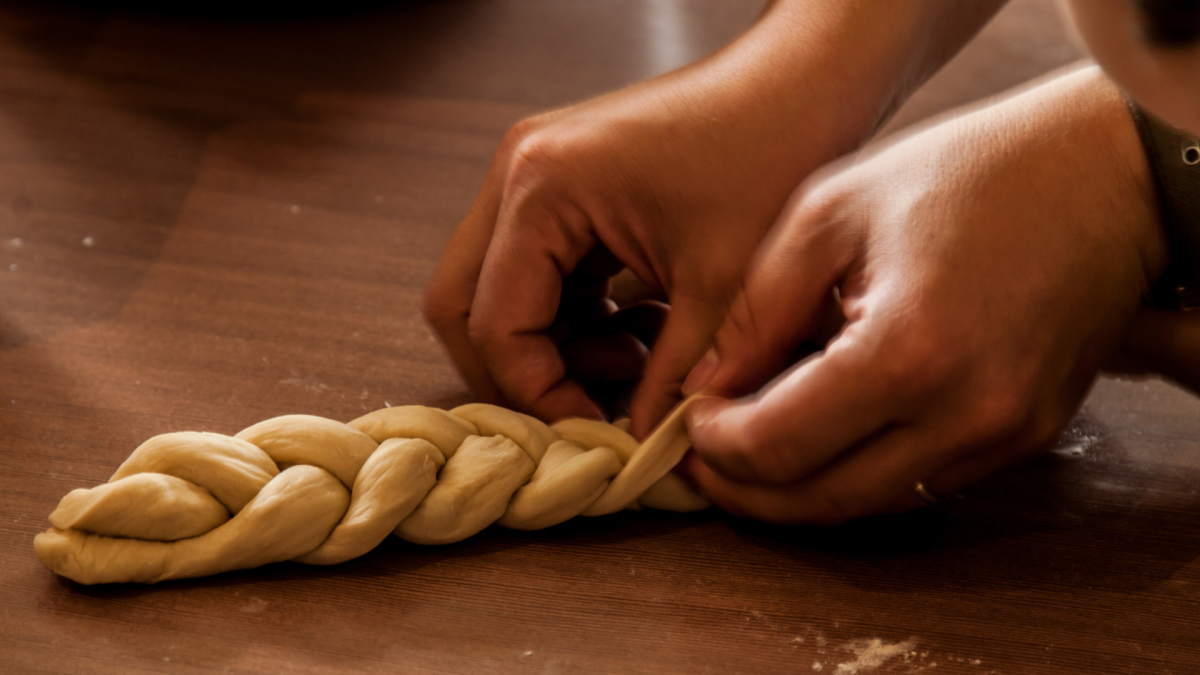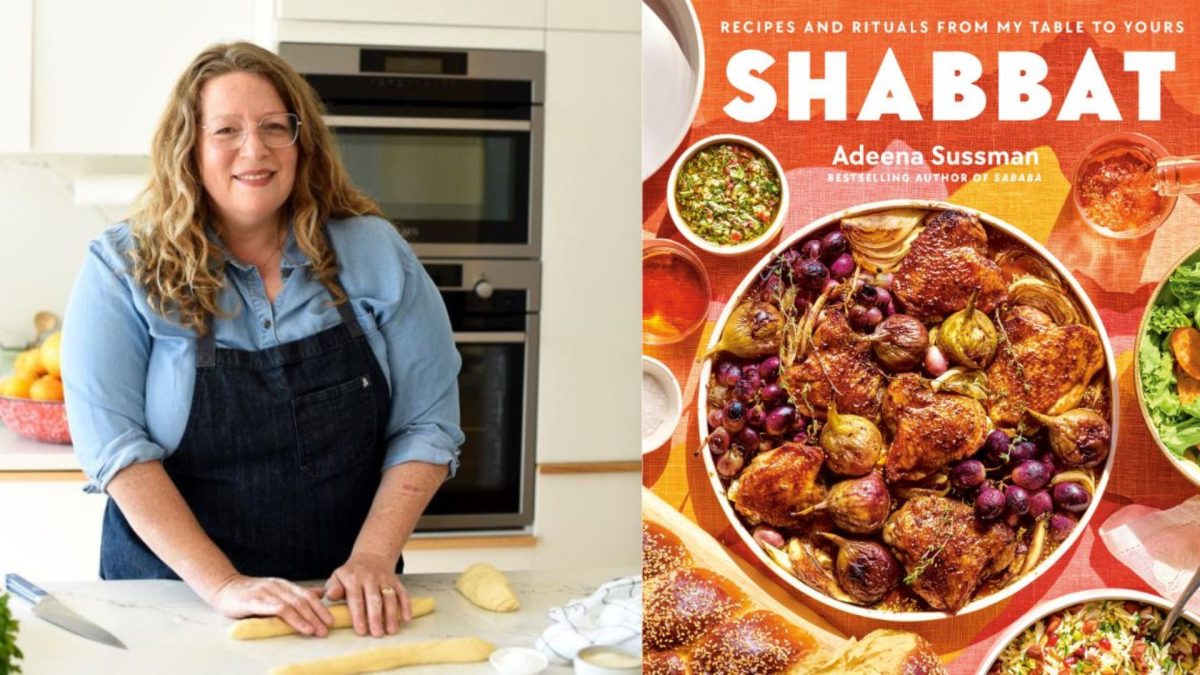I have been cooking all 73 years of my married life, and I know when something needs salt or when it has enough. But I knew little about sodium, a chief ingredient in salt.
Then I was introduced to Sue Picus, a semi-retired registered dietician and 2023 Jewish Light Unsung Hero. Sue teaches classes to older adults at St. Louis Oasis, including one on sodium in foods. I wanted to know: From babies on up to oldies like me, how much salt is too much? How much is enough? What are salt’s dangers? Is there such a thing as “good salt?” And are salt and sodium interchangeable terms?
Before I met Sue, I played a game in my kitchen. I randomly selected six items from my pantry, set them on the counter, put on my glasses and noted the amount of sodium in each, per serving. Here’s what I found:
ADVERTISEMENT
- 2 tablespoons Jif Extra Crunchy Peanut Butter, 110 milligrams,
- 1 cup prepared Lipton Extra Noodle Soup Mix with Real Chicken Flavor, 670 milligrams,
- 1 tablespoon Hellmann’s Mayonnaise, 110 milligrams,
- 1 cup Bush’s Best Canned Beans, 1,200 milligrams,
- Libby’s Pure Pumpkin, 5 milligrams.
One cannot live on canned pumpkin. I needed Sue.
She joined me and my husband, Billy, for lunch. We served Chinese chicken salad, which has almost no salt, and we asked her to define salt and sodium.
“Whenever I hear the word salt, I automatically think about the fact that salt has sodium and sodium is what I want to limit,” she said. “We all say that a food has too much salt, or I am eating too much salt, but really, it is sodium we are concerned with.”
Sue said that even though sodium does not bother some people, the average person, even with no health concerns, should be aware of salt (sodium) intake.
ADVERTISEMENT
“A taste for salt is a learned taste,” she said, “and one cannot quit cold turkey. If you slowly reduce the salt, you will adjust to the taste. And you will learn to use other seasonings.”
Using little or no salt sounds dire, but a look at what occurs when there is too much salt in the diet is an alert. According to information from the Federal Drug Administration that Sue brought with her: “Diets higher in sodium are associated with increased risk of high blood pressure, which is a major cause of stroke and heart disease. Uncontrolled high blood pressure can raise the risk of heart attack, heart failure, stroke, kidney disease and blindness.”
The FDA info goes on: Sodium is an essential nutrient. The body needs it to maintain a balance of body fluids to keep muscles and nerves running smoothly. Most of us, however, eat too much of it.”
Americans eat about 3,400 milligrams of sodium per day. Yet the dietary guidelines recommend adults limit sodium intake to less than 2,300 milligrams per day, equal to about 1 teaspoon of table salt. For children under 14, the limits are lower.
And where are we getting that much sodium? About 40% of the dietary sodium consumed by Americans comes from deli meat sandwiches, pizza, burritos and tacos, purchased soups and purchased cooked poultry, chips and burgers.
The same pamphlet offers 10 easy tips for reducing sodium consumption. They especially apply to the elderly for whom a lower salt diet is essential:
- Read the nutrition fact labels on cans and packages.
- Prepare your own food when you can.
- Add flavor without salt: Try non-salt seasoning blends.
- Choose fresh poultry, meat and seafood, rather than processed.
- Buy fresh or frozen vegetables or low sodium-non-salt canned vegetables.
- Rinse sodium-containing canned foods to get rid of some of the sodium.
- Choose low-sodium or no-salt-added snacks.
- Check the labels on condiments.
- Reduce your portion size.
- Make lower-sodium choices at restaurants.
Sue also had 10 suggestions:
- In the morning, measure out ½ teaspoon salt, put it on a plate and consider it your salt allotment for the day. If you did not use it all, try ¼ teaspoon the next day. “You get used to using less salt,” she said.
- Take your reading glasses for reading the labels to the grocery store along with a pen and notebook.
- Canned soups might range from 200 milligrams per serving to lots of variations.
- Note the serving size on the label.
- During the cooking process, add no salt. Wait and taste.
- One of the joys of eating at home with home-cooked foods is that you can control your salt intake.
- Kosher salt (with its large granules) is good because you use less.
- Salt has been removed from baby food. It was put there to please the mother.
- You can take a beloved recipe and lower the sodium: Drain and rinse canned beans. Use no salt during the cooking process. Wait and taste.
- Homemade broth is best because the sodium is light.
I compiled a cookbook several years ago in which I advised “salt and pepper to taste” during the cooking process. Now, I strongly recommend the following: Wait until the dish is done, taste it and then if needed, add salt with care.
Homemade Chicken Stock
Makes about 4 quarts
This rich stock can be a base for many soups and includes no added salt. The chicken remains moist enough for salads or sandwiches.
Ingredients:
About 10 pounds of chickens, quartered or cut in pieces
4 quarts cold water
4 carrots, scrubbed and cut into chunks
2 celery ribs with leaves
2 large onions, unpeeled, halved
1 parsnip, scrubbed and cut into chunks
2 garlic cloves, unpeeled, halved
1 teaspoon dried thyme
2 bay leaves
6 sprigs fresh parsley
12 peppercorns
6 whole cloves
1 unpeeled fresh tomato, optional
Directions:
- Put the chicken into a stockpot; add the cold water, making sure the chicken is immersed. Turn the heat to medium, partly cover the pot and cook until the stock begins to simmer.
- When the stock is simmering, so-called “scum,” which actually contains nutrients, will rise to the top. If you wish clear broth, skim it with a small strainer.
- Add the remaining ingredients. Simmer partly covered about an hour, until the chicken is tender when pierced with a sharp knife. Remove the lid, take the pot off the heat and let the chicken cool in the stock, keeping it moist.
- When the chicken is cool enough to handle, remove the skin and bones and return them to stockpot. Wrap the chicken well and refrigerate or freeze it for later use in sandwiches or chicken salad.
- Let the stock simmer uncovered about 2 hours. (Do not allow it to boil. Boiling will disperse fat throughout the stock, making it cloudy.)
Chicken Soup
Serves 6
Ingredients:
6 cups chicken stock
2 carrots peeled and sliced
1 cup fine noodles, or ½ cup rice or ½ cup barley
Taste and add salt if needed
2 tablespoons minced fresh parsley
Directions:
- Bring the stock to a simmer. Add the carrots and cook until they are tender.
- Stir in the noodles, rice or barley. Cook until tender.
- Taste and add salt, if needed.
- Serve the soup garnished with parsley.
Turkey Stock
Makes about 7-8 cups and includes no added salt
Ingredients:
1 carcass from a 12-15 pound roasted turkey
Cold water to cover
2 carrots, scrubbed
1 celery rib
2 onions, unpeeled, halved
2 garlic cloves, unpeeled, halved
1 bay leaf
½ teaspoon dried thyme
6 peppercorns
Directions:
- Put the turkey carcass in a large stock pot. Add cold water to cover. Bring to a simmer.
- Add the vegetables and seasonings. Simmer partly covered for 1 ½ hours.
- Pour the stock through a colander into a large clean bowl, discarding bones, seasonings and vegetables.
- Freeze in 2- and 4-cup containers.
Lentil Soup
Ingredients:
3 tablespoons butter, extra virgin olive oil or a combination
2 celery ribs, diced
1 medium carrots, scrubbed and diced
2 medium onions, peeled and sliced
6 cups hot broth—chicken, turkey, beef or hot water
1 bay leaf
¼ teaspoon thyme
¼ cup diced turnip
1 ½ cups washed lentils
Kosher salt
Directions:
- Heat the butter in a large saucepan; stir in the celery, carrots and onions and cook covered over low heat, stirring occasionally, until the vegetables are tender and just beginning to brown, about 10 minutes.
- Add the hot broth, bay leaf, thyme, turnip and lentils. Simmer partly covered for 1 ¼-1 ½ hours until the lentils are tender. Remove the bay leaf.
- Puree the soup if desired, adding more liquid if it seems too thick.
- Taste and add salt if needed.
Simple Split Pea Soup with Mint
Makes about 8 cups and is good hot or chilled.
Ingredients:
2 cups green split peas, rinsed
1 medium onion, peeled and sliced
4 garlic cloves, peeled and crushed
½ cup brown rice
6 cups no-salt chicken broth, homemade or canned
Salt and pepper
Fresh mint leaves to garnish
Directions:
- Combine the peas with the onion, garlic, rice and broth. Cover and simmer for 40 minutes.
- Puree the soup. Add salt if needed and pepper to taste. For cold soup, chill overnight, adding more seasonings if needed. (Cold soups require more seasonings than hot.)
- Garnish with fresh mint leaves to serve.




















